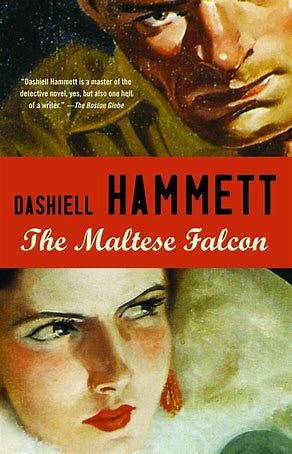“The Maltese Falcon” by Dashiell Hammett
A book about male ego and the several things needed to reign it in.
One does not realize just how much male-centred crime is until one begins to start counting. Be it the James Bonds of the West (a plea-filled reminder of a time when England used to be the centre of the world) or the Singham cops’ closer home (India’s original claim to a cinematic universe perhaps), the male ego abounds in plenty.
Of course, it is not to say that women are absent from these narratives. Where else would you find your damsels in distress and the ever-attractive femme fatales? No critical study of crime fiction would be complete without an analysis of the male ego at the heart of the genre, and this novel presents plenty of opportunity to do just that.
Crime No-Yaar, Corruption Yes-Man!
The detective fiction or the crime-noir (the latest Batman anyone?) must have a dark and brooding man of questionable ethics at its heart. While the Sherlock Holmes’ of the world operate with unflinching morality and exist in a world which is black and white, the streets of noir are as gray and dim as the characters they contain.
What stood out to me is the sheer corruption which the novels encompass and do so unflinchingly. Be it in following suspects or ravaging locked rooms, there is always a mode of corruption ready at hand if the right cash in there on offer.
In this respect, the role of crime fiction as a sort of reminder of right and wrong for a middle-class reading audience is certainly brought into question. Frustration aside, it is incredible how the corrupt practises become a steady part of the narrative, something which is normalized rather than exemplified. I was reminded of The Girl from Nongrim Hills for a comparative lens on how the Indian equivalent works. Of course, Bollywood has me beat on that!
The Un-feeling, Over-thinking Hero
At the heart of this narrative is an angry young man whose defining characteristic is his inability to feel. It was frustrating to read a character so one-dimensional in his cerebral potential for empathy. I was then reminded that the novel was written in 1930 and Sam Spade is thus expected to be forgiven for being a “product of his times.” The cigarettes he keeps smoking are likewise products of his time.
His un-feeling-ness is contrasted by the over-feeling and almost melodramatic outbursts of the female characters, all of whom are reduced to their outward features. The final twist of the whole narrative in fact comes off as weak, as a character who has been painted as all-emotion suddenly appearing to hold something extra hidden all along.
What I will credit Spade for is his ability to think- to observe, calculate, and arrive at shockingly accurate conclusions. That element of detective fiction still survives in this narrative. But that is not enough to absolve the slab of cold stone which is rather unpredictably played by Humphrey Boggart in the 1941 adaptation of the novel.
You need not feel much to like and follow this newsletter- a simple piece of appreciation would be more than enough. Do read this book and if you would like a deeper dive into the dynamics at play here, consider enrolling for this certificate course which I co-offer which is now into its second year of availability.
https://sac-elearning.com/courses/an-overview-to-crime-fiction/


